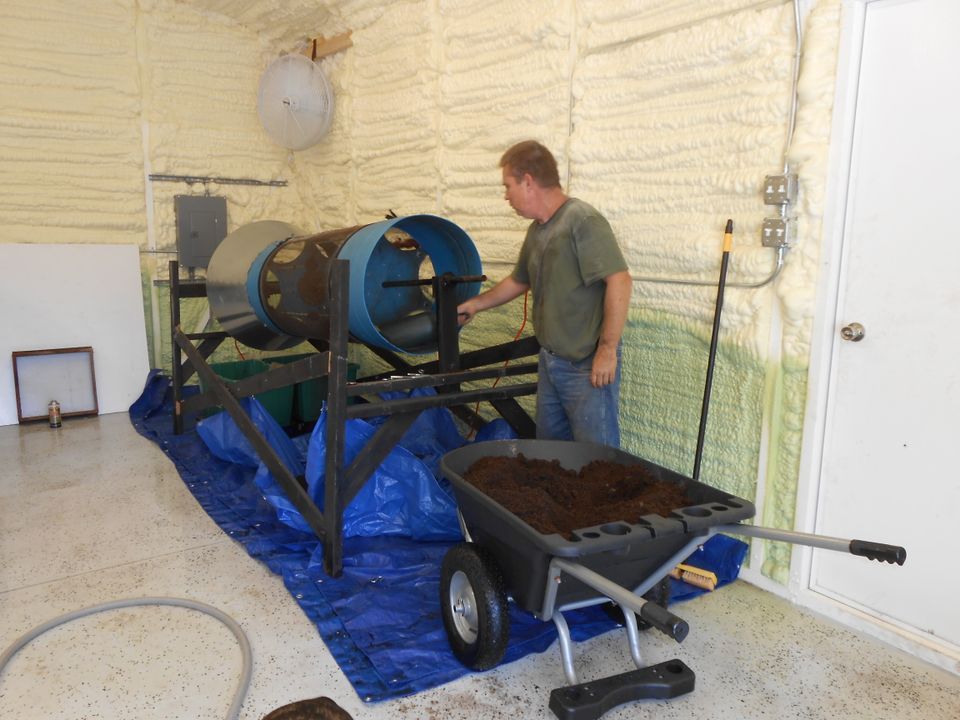
According to Don Lotter, PHd. of Rodale Institute, over the past decade research has shown that worm castings go beyond the benefits of plain compost.
An article in the IMP Practitioner discussed vermicompost’s ability to increase crop yields dramatically. One study found a 200% growth increase in lettuce when the plants were germinated and transplanted in a worm casting mixture. One of the main classes of active plant growth in worm castings are the humic acids.
These were found to be associated with significantly greater plant height, leaf area, shoot and root production in tomato and cucumber seedlings. It also promoted better growth and flowers in raspberries.
Worm castings have also been known to suppress certain plant diseases. Castings added to the soil carry to the root zone a rich complement of soluble plant nutrients and growth enhancing compounds. Unlike soluble plant fertilizer, worm castings are a naturally occurring product.
Therefore, the plant will draw nutrients from the castings as it needs it over a two-week period. All of the product is being used instead of 3/4 of it going washing away. The reason for this is that plants have an immune system like humans, and they are resistant to chemicals that do not occur naturally. Worm castings provide a diverse variety of microbial life that is a storehouse of nutrients that is not lost in rain or irrigation.
The plant is delivered an ongoing reliable food source when the bacteria and microscopic fungi present in worm castings feed on the organic matter releasing some of the nutrients into the soil and storing others for their own energy and reproduction. When nematodes and protozoa feed upon them, the nutrients are stored in the bacterial and fungal bodies and then released into the soil in plant available form.
Hair-thin fungal tentacles called hyphae wrap around soil and organic particles in their search for food forming aggregates that are the basis for good soil structure. Both the fungi and the organic matter are held in the soil. Bacteria exude sticky glues that enable them to cling to solid particles of mineral and organic matter ensuring they too remain in the soil and like the fungi aid in the formation of aggregates. It also aids in the diversity of organisms in the root zone which helps disease and pest suppression.
Chemical fertilizers provide only synthetic nutrients, much of which is lost in watering the plants and are also detrimental to the soil because they either bypass or destroy many of the natural beneficial bacteria. They also add toxins to your plants and food and are a main source of the country’s water pollution.
An article in the IMP Practitioner discussed vermicompost’s ability to increase crop yields dramatically. One study found a 200% growth increase in lettuce when the plants were germinated and transplanted in a worm casting mixture. One of the main classes of active plant growth in worm castings are the humic acids.
These were found to be associated with significantly greater plant height, leaf area, shoot and root production in tomato and cucumber seedlings. It also promoted better growth and flowers in raspberries.
Worm castings have also been known to suppress certain plant diseases. Castings added to the soil carry to the root zone a rich complement of soluble plant nutrients and growth enhancing compounds. Unlike soluble plant fertilizer, worm castings are a naturally occurring product.
Therefore, the plant will draw nutrients from the castings as it needs it over a two-week period. All of the product is being used instead of 3/4 of it going washing away. The reason for this is that plants have an immune system like humans, and they are resistant to chemicals that do not occur naturally. Worm castings provide a diverse variety of microbial life that is a storehouse of nutrients that is not lost in rain or irrigation.
The plant is delivered an ongoing reliable food source when the bacteria and microscopic fungi present in worm castings feed on the organic matter releasing some of the nutrients into the soil and storing others for their own energy and reproduction. When nematodes and protozoa feed upon them, the nutrients are stored in the bacterial and fungal bodies and then released into the soil in plant available form.
Hair-thin fungal tentacles called hyphae wrap around soil and organic particles in their search for food forming aggregates that are the basis for good soil structure. Both the fungi and the organic matter are held in the soil. Bacteria exude sticky glues that enable them to cling to solid particles of mineral and organic matter ensuring they too remain in the soil and like the fungi aid in the formation of aggregates. It also aids in the diversity of organisms in the root zone which helps disease and pest suppression.
Chemical fertilizers provide only synthetic nutrients, much of which is lost in watering the plants and are also detrimental to the soil because they either bypass or destroy many of the natural beneficial bacteria. They also add toxins to your plants and food and are a main source of the country’s water pollution.
